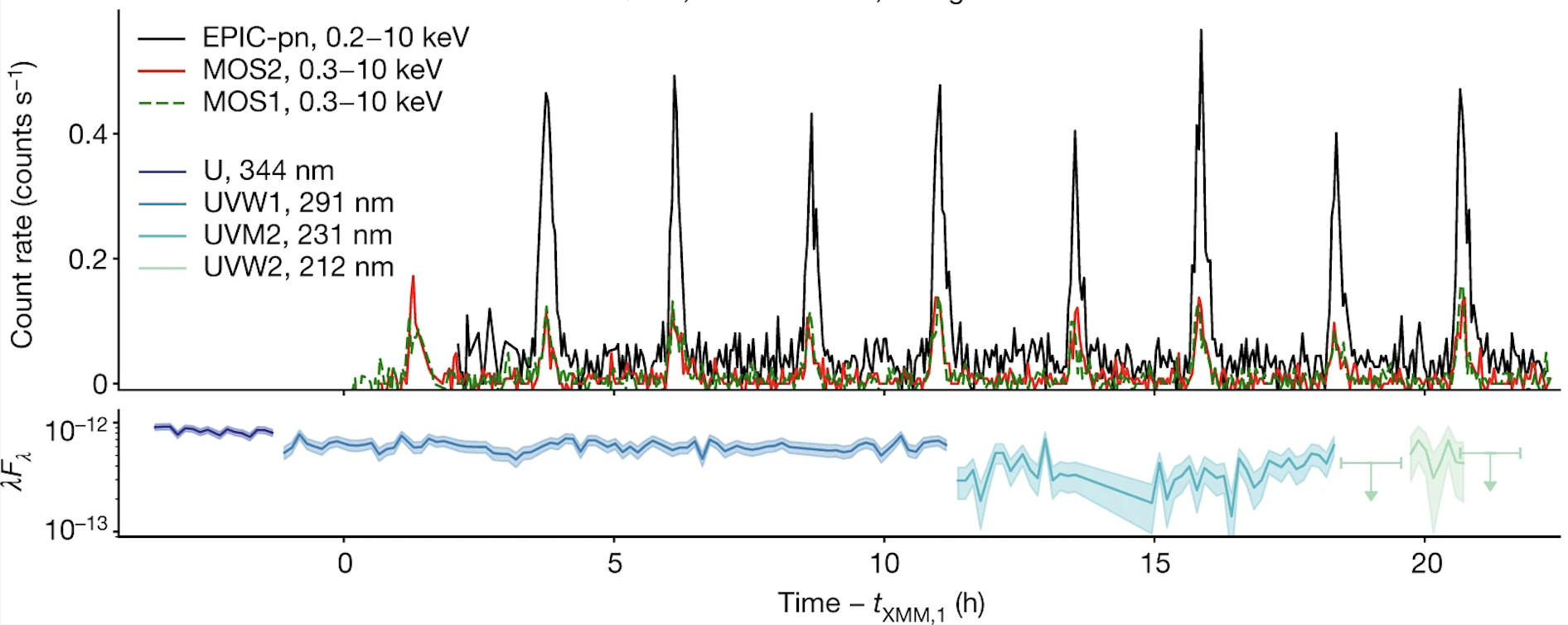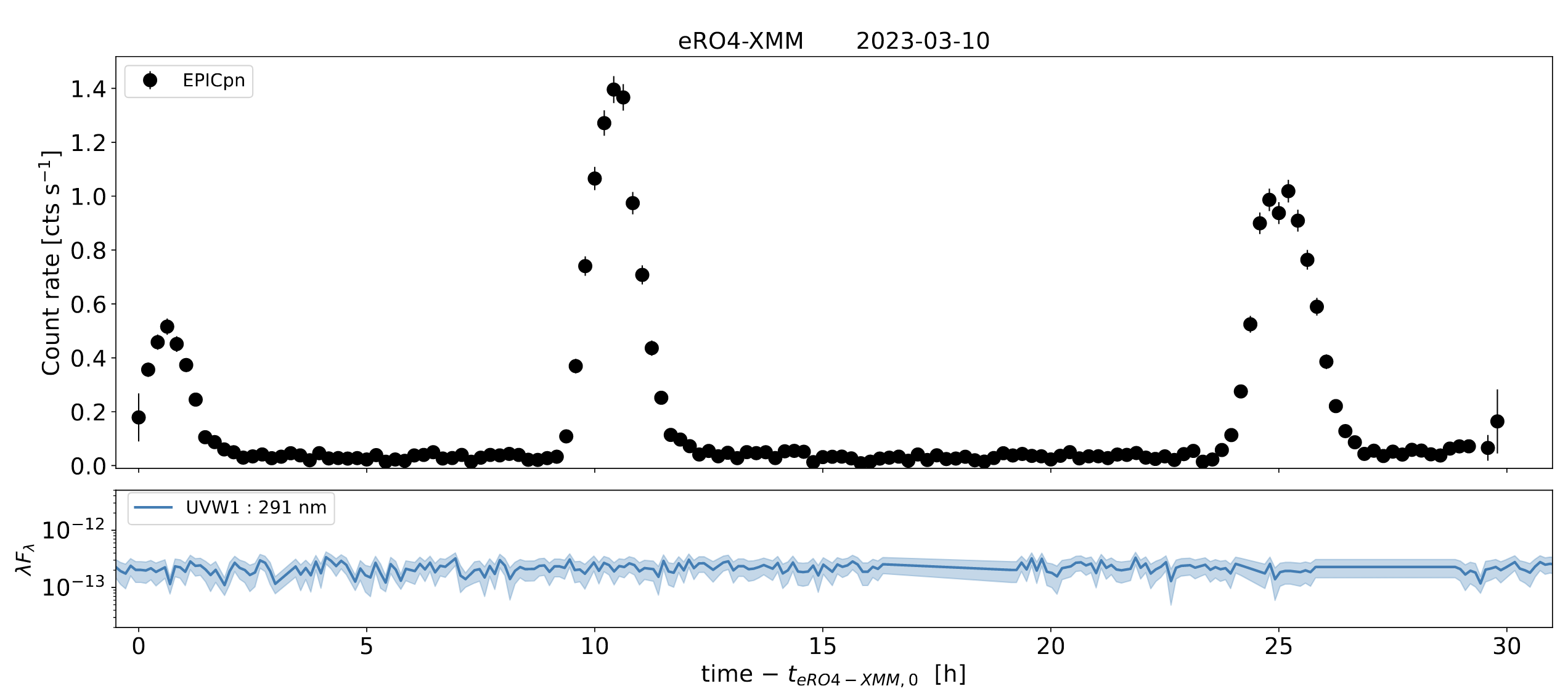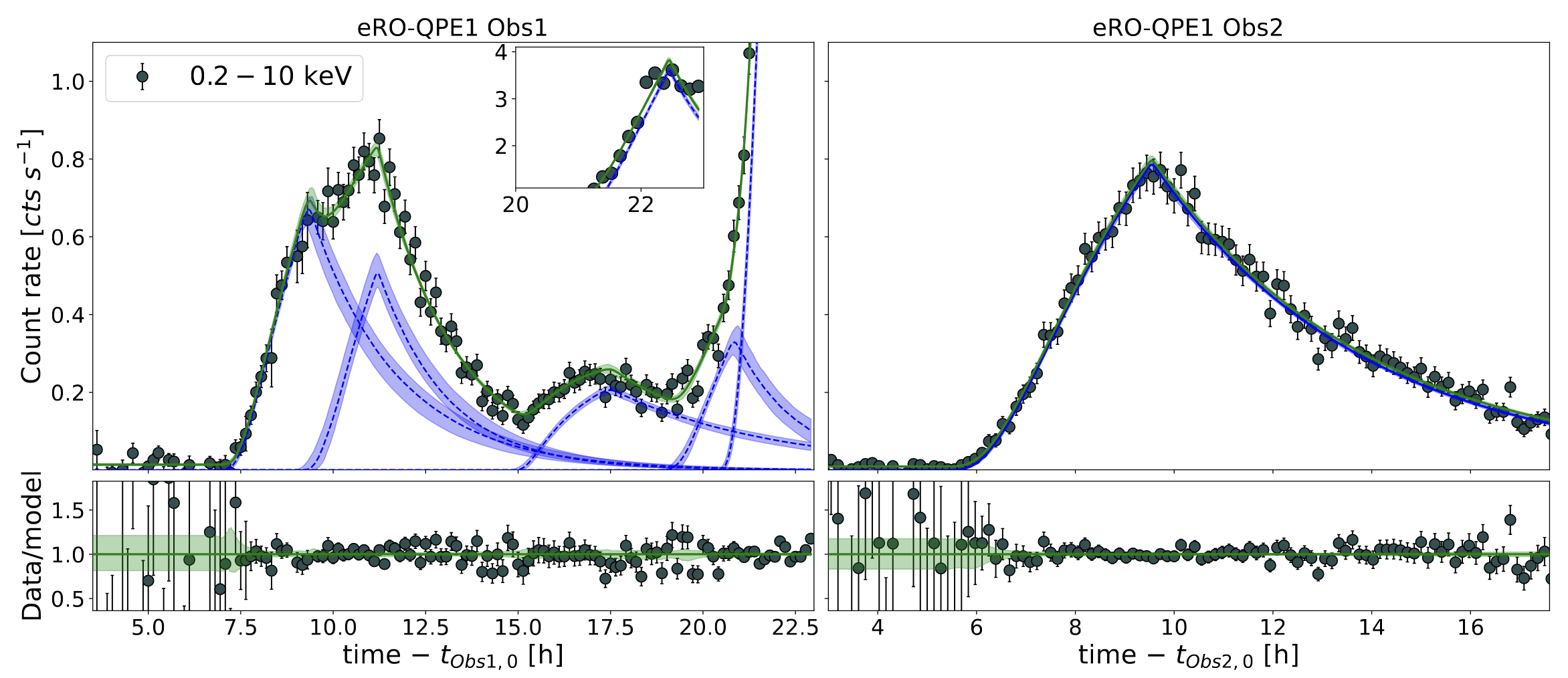Recently I have dedicated a lot of my efforts to the discovery and study of new rare outliers in the family of accreting black holes in the nuclei of galaxies, the so-called quasi-periodic eruptions (QPEs). QPEs are high-amplitude bursts of X-ray radiation recurring every few hours and originating near the central massive black holes of relatively small galaxies.
The origin of QPEs is still debated, with most models explaining them with either accretion instabilities or binaries with a high mass ratio, such that the orbiter is of stellar mass. The latter scenario would make QPEs the electromagnetic counterpart of gravitational wave events known as extreme mass ratio inspirals (EMRIs), opening a new window to the future of multi-messenger astronomy.
QPEs discoveries
I have worked on the systematic discovery of QPEs using data from the eROSITA X-ray telescope. Five years after the discovery of the first source reported in Miniutti et al., (2019), 5 out of the 10-12 publicly known QPEs have been found through my dedicated search (e.g., see the latest example: Arcodia et al., (2025)). In particular, the eROSITA QPE sources were found in galaxies with no pre-existing strong active nuclei, which suggested, for the first time from the observational point of view, that they could be related to galactic nuclei stellar dynamics and EMRIs in particular.
Here, I show two examples of QPE X-ray light curves (with optical-UV in the lower sub-panels) from Arcodia et al., (2021; 2024a), for the source eRO-QPE2 and eRO-QPE4, respectively.


Read more about QPE discoveries in this press release related to the publication reported in Arcodia et al., Nature (2021).
Follow-up of known QPEs
I have also worked on multi-wavelength follow-up of the known QPEs. For instance, in Arcodia et al., (2022) we realized, for the first time, that QPEs can appear “messier” than simple quasi-periodic isolated bursts, with eruptions that overlap one another at times, like in the following plot for the source eRO-QPE1.

In the same paper, we also identified, for the first time, that eruptions are energetically asymmetric over their time evolution, with a hotter/harder rise and a colder/softer decay, at the same flux level.
After the first EMRI models were published, I have worked on using available follow-up data of known QPEs to test the proposed theoretical models. Among other works as one of the main co-authors (e.g.; Chakraborty et al., 2024 by MIT Grad. student Joheen Chakraborty; and many other works to come soon), I led a study on the source eRO-QPE2 to try and explain its evolution over more than 3 years within the EMRI interpretation (Arcodia et al; 2024c).
First volumetric rates of QPEs
Making use of the 4 QPE sources discovered with the homogeneous eROSITA surveys, I was able to infer from these observations the first ever observational estimate of the intrinsic volumetric rates of QPEs (Arcodia et al; 2024b). It is shown as a function of average X-ray peak luminosity in this figure.

The (highly uncertain) integrated number implies that, at any time, roughly a galaxy every 30000 is emitting X-ray quasi-periodic eruptions at a peak brigther than the lower limit of the plot above.
If QPEs are indeed EMRI precursors or counterparts, they would provide the first ever observational constraint (formally a lower limit) to the expected number of EMRIs detected by the upcoming LISA mission!
